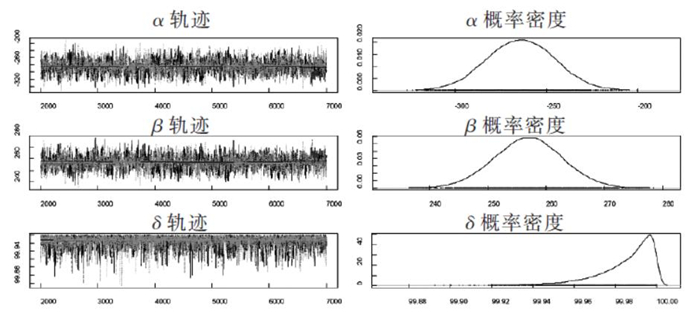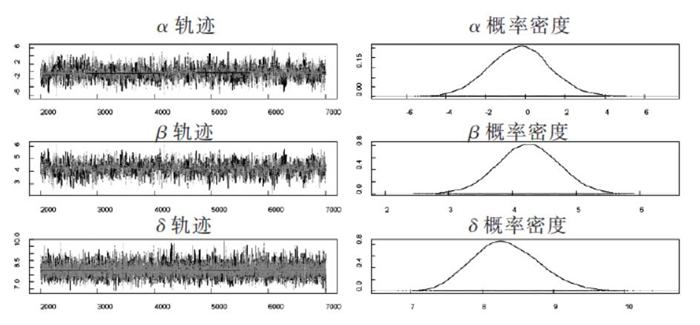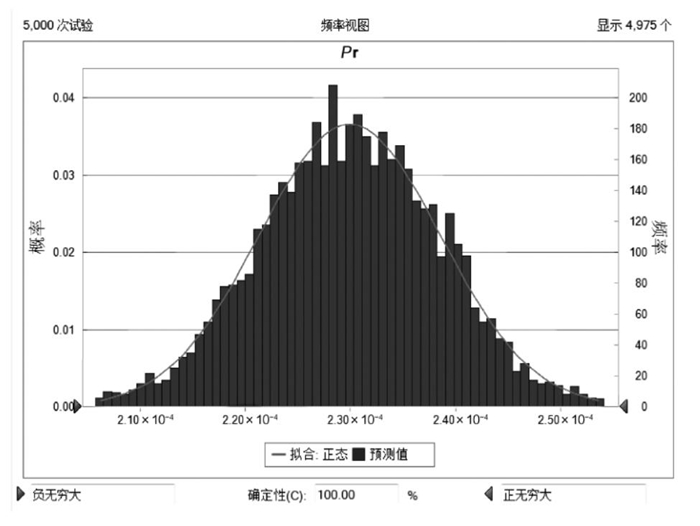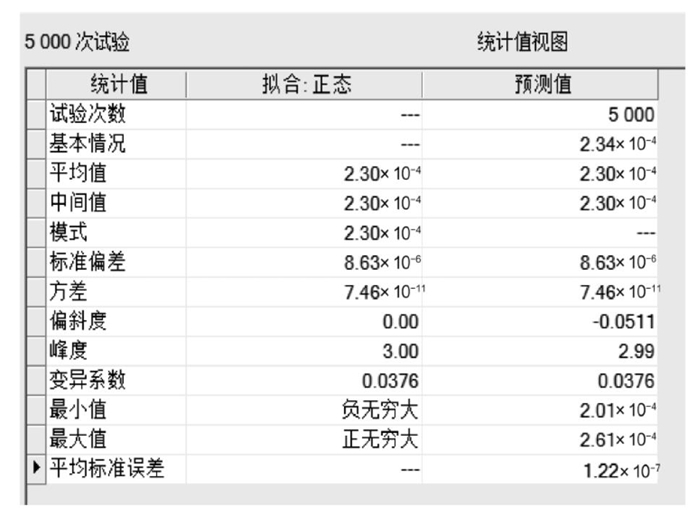Assessment of health risk of occupationally low-level benzene exposure based on biological monitoring indicator
-
+ English摘要:目的 通过流行病学调查资料和苯接触生物标志物的检测资料,初步建立基于生物监测指标的低浓度苯暴露致癌风险评价方法。方法 根据苯的流行病学调查资料,基于多阶模型推导出低浓度苯职业暴露下的致癌风险模型。利用贝叶斯线性回归和马尔科夫链蒙特卡洛方法,采用R语言、JARG软件包和水晶球软件建立苯空气浓度与苯代谢物浓度函数关系并进行不确定性分析,并利用尿中苯巯基尿酸(S-phenylmercapturic acid,S-PMA)和反-反式黏糠酸(trans,trans-muconic acid,tt-MA)的浓度预测苯的致癌风险。结果 考虑适用低浓度苯暴露的情况,建立了二项式的多阶模型用于表征致癌风险。基于建立的致癌风险模型,我国现行的职业接触限值[空气中苯的时间加权平均容许浓度6 mg/m3,工作班后尿S-PMA浓度100 μg/g(以Cr校正),班后尿tt-MA浓度3.0 mg/g(以Cr校正)]下的致癌风险分别为5.64 × 10-4、2.31 × 10-4、1.52 × 10-4,均高于美国环境保护署(EPA)和疾病预防控制中心(CDC)提出的职业人群致癌风险可接受水平(10-4)。结论 利用苯的代谢产物预测致癌风险,显示在空气中苯浓度低于职业接触限值的情况下,苯的致癌影响仍然存在。需要采取工程控制及个体防护等措施,尽可能降低苯的致癌风险。目前我国苯职业接触限值存在尽可能降低的必要性。
-
作者声明 本文无实际或潜在的利益冲突
-
表 1 中国接苯工人各分组累积暴露量及其对应的致癌风险a
累积暴露量分组[/mg/(m3·年)] D累积暴露①[/mg/(m3·年)] RR 发病人数② Pr $-\sum\limits_{i=0}^k a_i D_{\text {累积暴露}}^i$ 0(非暴露组) 0 1.0 9 2.51 × 10-4 0 < 127.6 63.8 1.9 11 4.78 × 10-4 - 2.26 × 10-4 127.6 ~ 319.0 223.3 3.1 8 7.79 × 10-4 - 5.28 × 10-4 注:①气体浓度ppm与mg/m3的换算在常温常压(25℃,1个标准大气压)下进行;② 1972—1987年间开展的该项调查,由于医疗条件的限制,可以认为白血病的发病死亡人数近似为发病人数。 表 2 尿S-PMA、tt-MA浓度和空气中苯浓度的线性回归参数估计分布
[μg/g(以Cr校正)] 代谢物 斜率β 截距α 分布 μ值 σ值 分布 μ值 σ值 S-PMA 正态 256.72 5.60 正态 - 263.13 18.06 tt-MA 正态 4.24 0.48 正态 - 0.260 1.54 表 3 尿S-PMA、tt-MA浓度和空气中苯浓度的线性回归参数各百分位数
[ μg/g(以Cr校正)] 代谢物 斜率 截距 2.5% 25% 50% 75% 97.5% 2.5% 25% 50% 75% 97.5% S-PMA 245.70 252.97 256.74 260.6 267.6 - 296.93 - 275.56 - 263.17 - 250.9 - 228.0 tt-MA 3.277 3.910 4.237 4.5648 5.154 - 3.200 - 1.316 - 0.271 0.8125 2.797 表 4 空气中不同苯浓度或生物监测结果对应的致癌风险
空气中苯浓度CTWA(/mg/m3)① S-PMA/[μg/g(以Cr校正)]② tt-MA/[(mg/g(以Cr校正)②] 致癌风险(Pr) 0.32 1.10 9.39 × 10-5 0.77③ 3.00③ 1.52 × 10-4 1.42③ 100.00③ 5.76 2.31 × 10-4 1.6 147.62 6.52 2.51 × 10-4 3.0 507.03 12.46 3.89 × 10-4 3.2 558.37 13.31 4.05 × 10-4 6.0 1277.19 25.18 5.64 × 10-4 注:①空气中苯浓度0.32 mg/m3,对应NISOH制定的推荐限值(10 h TWA,40 h/周)0.1 ppm;1.6 mg/m3对应ACGIH制定的阈限值TWA浓度0.5 ppm;3.2 mg/m3对应OSHA制定的8 h TWA浓度1 ppm;3.0 mg/m3对应我国职业接触限值PC-TWA的1/2;6.0 mg/m3对应我国职业接触限值PC-TWA;②表中苯的代谢物浓度基于经筛选的空气中苯浓度≤6 mg/m3的中国天津工人数据的线性拟合参数均值估计(见表 2),即CS-PMA = 256.72 × CTWA - 263.13、Ctt-MA = 4.24 × CTWA - 0.26;③空气中苯浓度0.77 mg/m3和1.42 mg/m3分别是将我国职业接触苯生物限值尿tt-MA 3.00 mg/g(以Cr校正)和S-PMA 100.00 μg/g(以Cr校正),分别代入Ctt-MA = 4.24 × CTWA - 0.26和CS-PMA = 256.72 × CTWA - 263.13得出。 -
[1] 国家卫生健康委员会. 工作场所有害因素职业接触限值第1部分: 化学有害因素: GBZ 2.1—2019[S]. 北京: 中国标准出版社, 2019. [2] Occupational Safety and Health Administration(OSHA). 29 CFR (Code of Federal Regulations) part 1910-occupational safety and health standards-subpart z-toxic and hazardous substances-1910.1028 benzene[S/OL]. (2014-01-01)[2021-09-20]. https://ecfr.io/title-29/se29.6.1910_11028.
[3] National Institute for Occupational Safety and Health(NIOSH). NIOSH pocket guide to chemical hazards. DHHS (NIOSH) Publication No. 2010-168[DB/OL]. (2020-02-18)[2021-09-20]. http://www.cdc.gov/niosh/npg.
[4] American Conference of Governmental Industrial Hygienists(ACGIH). 2020 Threshold limit values (TLVs) and Biological exposure indices(BEIs)[M]. Cincinnati(OH), USA: American Conference of Governmental Industrial Hygienists, 2020.
[5] 联合国粮农组织, 世界卫生组织. 环境健康基准240: 食品中化学物风险评估原则和方法[M]. 刘兆平, 李凤琴, 贾旭东, 译. 北京: 人民卫生出版社, 2012: 73. [6] International Agency for Research on Cancer(IARC). 2018 IARC monographs on the evaluation of carcinogenic risks to humans: benzene[R]. Lyon: IARC 2018: 120.
[7] 李雷, 李红, 王力, 等. 我国低浓度职业性苯暴露对人体外周血白细胞数影响的Meta分析[J]. 环境与健康杂志, 2012, 29(7): 637-639. https://www.cnki.com.cn/Article/CJFDTOTAL-HJYJ201207024.htm [8] LAN Q, ZHANG L, LI G, et al. Hematotoxicity in workers exposed to low levels of benzene[J]. Science, 2004, 306(5702): 1774-1776. doi: 10.1126/science.1102443
[9] WILBUR S, KEITH S, FAROON O, et al. Toxicological profile for benzene[M]. Atlanta: U. S department of health human services, 2007.
[10] KOH D, JEON H, LEE S, et al. The relationship between low-level benzene exposure and blood cell counts in Korean workers[J]. Occup Environ Med, 2014, 72(6): 421-427.
[11] 李小琴, 张学艳, 潘兴扬, 等. 低浓度苯暴露对工人血常规等指标的影响: 基于倾向值匹配的分析[J]. 职业卫生与应急救援, 2021, 39(6): 681-684;701. doi: 10.16369/j.oher.issn.1007-1326.2021.06.016 [12] HAYES R B, YIN S, DOSEMECI M, et al. Benzene and the dose-related incidence of hematologic neoplasms in China[J]. J Natl Cancer Inst, 1997, 89(14): 1065-1071. doi: 10.1093/jnci/89.14.1065
[13] COX L A, SCHNATTER A R, BOOGAARD P J, et al. Non-parametric estimation of low-concentration benzene metabolism[J]. Chem Biol Interact, 2017, 278: 242-255. doi: 10.1016/j.cbi.2017.08.007
[14] 宋世震, 胡霞敏, 刘黎文, 等. 职业接触苯工人尿中黏糠酸测定方法与生物限值研究[J]. 中华劳动卫生职业病杂志, 2006, 24(11): 676-679. doi: 10.3760/cma.j.issn.1001-9391.2006.11.012 [15] EDLER L, KOPP-SCHNEIDER A. Statistical models for low dose exposure[J]. Mutat Res, 1998, 405(2): 227-236. doi: 10.1016/S0027-5107(98)00140-7
[16] United States Environmental Protection Agency(US EPA). Guidelines for carcinogen risk assessment[R]. Washington DC: EPA, 1986.
[17] United States Environmental Protection Agency(US EPA). Guidelines for carcinogen risk assessment[R]. Washington DC: EPA, 2005.
[18] United States Environmental Protection Agency(US EPA). EPA's approach for assessing the risks associated with chronic exposure to carcinogens[EB/OL]. (2022-06-22)[2021-09-20]. https://www.epa.gov/iris/epas-approach-assessing-risks-associated-chronic-exposure-carcinogens.
[19] United States Environmental Protection Agency(US EPA). Carcinogenic effects of benzene: an update[R]. Washington DC: EPA, 1998.
[20] VAN WIJNGAARDEN E, HERTZ-PICCIOTTO I. A simple approach to performing quantitative cancer risk assessment using published results from occupational epidemiology studies[J]. Sci Total Environ, 2004, 332(1-3): 81-87. doi: 10.1016/j.scitotenv.2004.04.005
[21] CHEN W, SUN K, ZHENG R, et al. Cancer incidence and mortality in China, 2014[J]. Chi J Cancer Res, 2018, 30(1): 1-12. doi: 10.21147/j.issn.1000-9604.2018.01.01
[22] WAIDYANATHA S, ROTHMAN N, LI G, et al. Rapid determination of six urinary benzene metabolites in occupationally exposed and unexposed subjects[J]. Anal Biochem, 2004, 327: 184-199. doi: 10.1016/j.ab.2004.01.008
[23] KIM S, VERMEULEN R, WAIDYANATHA S, et al. Using urinary biomarkers to elucidate dose-related patterns of human benzene metabolism[J]. Carcinogenesis, 2006, 27: 772-781. doi: 10.1093/carcin/bgi297
[24] 梅勇, 宋世震, 陈斯琦, 等. 职业接触苯尿中苯巯基尿酸生物限值研究[J]. 中华劳动卫生职业病杂志, 2009, 27(11): 641-643. [25] ZHOU Y, WANG K, WANG B, et al. Occupational benzene exposure and the risk of genetic damage: a systematic review and meta-analysis[J]. BMC Public Health, 2020, 20(1): 1113. doi: 10.1186/s12889-020-09215-1
[26] UZMA N, KUMAR B S, HAZARI M A H. Exposure to benzene induces oxidative stress, alters the immune response and expression of p53 in gasoline filling workers[J]. Am J Ind Med, 2010, 53(12): 1264-1270. doi: 10.1002/ajim.20901
[27] MORO A M, BRUCKER N, CHARAO M F, et al. Early hematological and immunological alterations in gasoline station attendants exposed to benzene[J]. Environ Res, 2015, 137: 349-356. doi: 10.1016/j.envres.2014.11.003
[28] COPLEY G B, SCHNATTER A R, ARMSTRONG T W, et al. Hospital-Based Case-Control Study of MDS Subtypes and Benzene Exposure in Shanghai[J]. J Occup Environ Med, 2017, 59(4): 349-355. doi: 10.1097/JOM.0000000000000952
[29] STENEHJEM J S, KJAERHEIM K, BRATVEIT M, et al. Benzene exposure and risk of lymphohaematopoietic cancers in 25 000 offshore oil industry workers[J]. Brit J Cancer, 2015, 112(9): 1603-1612. doi: 10.1038/bjc.2015.108
[30] LI M Y, HUANG D Y, LIU M. MCSim-Based Occupational Health Risk Assessment on Benzene[J]. JRACR, 2013, 3(3): 135-145. doi: 10.2991/jrarc.2013.3.3.3
[31] ZHANG Q, HUANG D, LIU M. Study on risk evaluation based on occupational exposure evaluation and carcinogenic risk simulation[J]. JRACR, 2018, 8(3): 157-162. doi: 10.2991/jrarc.2018.8.3.5
[32] ZHANG Q, HUANG D, LIU M. Internal exposure simulation based on exposure related dose estimating model[J]. JRACR, 2013, 3(4): 175-184. doi: 10.2991/jrarc.2013.3.4.3






 下载:
下载:



